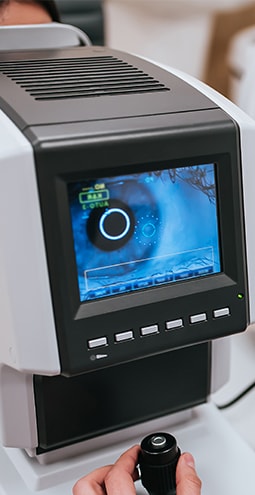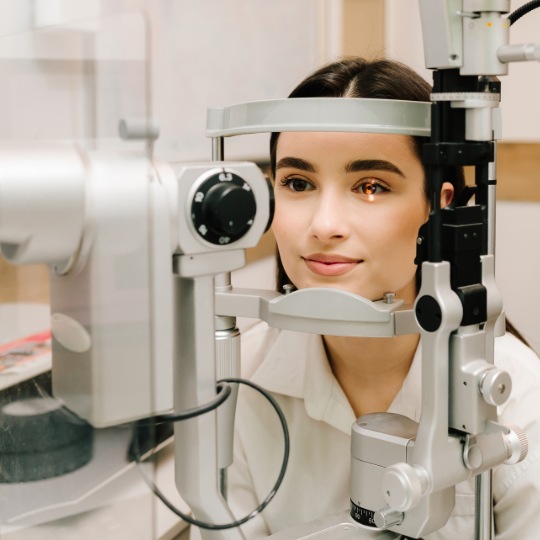Common Eye Diseases
Cataracts
Cataracts are cloudy or opaque areas in the naturally clear lens of the eye. They vary in size, from specks to the entire lens, which can effectively block vision. Cataracts commonly occur in people over 55 but can develop in infants and young children. They may also develop as a result of trauma or medications.
The lens inside the eye is responsible for focusing light on the retina, which sends images through the optic nerve to the brain. When the lens becomes clouded, it can no longer focus light properly, causing blurred or “hazy” vision.
Glaucoma
Glaucoma refers to a group of eye diseases that cause damage to the optic nerve. Without prompt intervention, glaucoma can lead to severe vision loss and even blindness.
There are 3 main types of glaucoma:
- Primary open-angle glaucoma often develops slowly, without any symptoms. With this type of glaucoma, the eye’s intraocular pressure rises gradually due to a buildup of fluid. The elevated pressure puts stress on the optic nerve, damaging it.
- Closed-angle glaucoma is the most severe form of glaucoma and is considered a medical emergency. With this type, the drainage angle in the eye closes suddenly, causing a rapid rise in intraocular pressure. Symptoms include severe pain, halos around lights, nausea, and redness in the eye. You should visit the nearest emergency room as soon as possible if you experience any symptoms of closed-angle glaucoma.
- Normal-tension glaucoma is the most puzzling of the 3. Glaucoma is most commonly characterized by elevated intraocular pressure, where normal-tension glaucoma occurs without a change in eye pressure. It remains unknown why the optic nerve is damaged with normal pressure levels. However, it can be diagnosed by observing your optic nerve during an eye exam.
Age-Related Macular Degeneration
Age-related macular degeneration, or AMD, is an eye disease that affects the central part of the retina, called the macula. The macula is responsible for identifying fine details within central vision, so when it’s damaged, significant central vision loss can develop.
There are 2 main types of AMD:
- Dry AMD is the more common of the 2, affecting around 80% of AMD patients. Dry AMD occurs when the macula begins to thin with age, and tiny clumps of a protein called drusen form.
- Wet AMD is less common, but much more serious. Wet AMD causes new, abnormal blood vessels to grow under the retina, which may rupture and leak blood and other fluids into the eye. Wet AMD is a medical emergency, so please call a medical professional for help immediately if you start to experience these symptoms.
We’d love to help you feel confident you’re getting the care you need to protect your vision. If you have any questions, please feel free to reach out.













